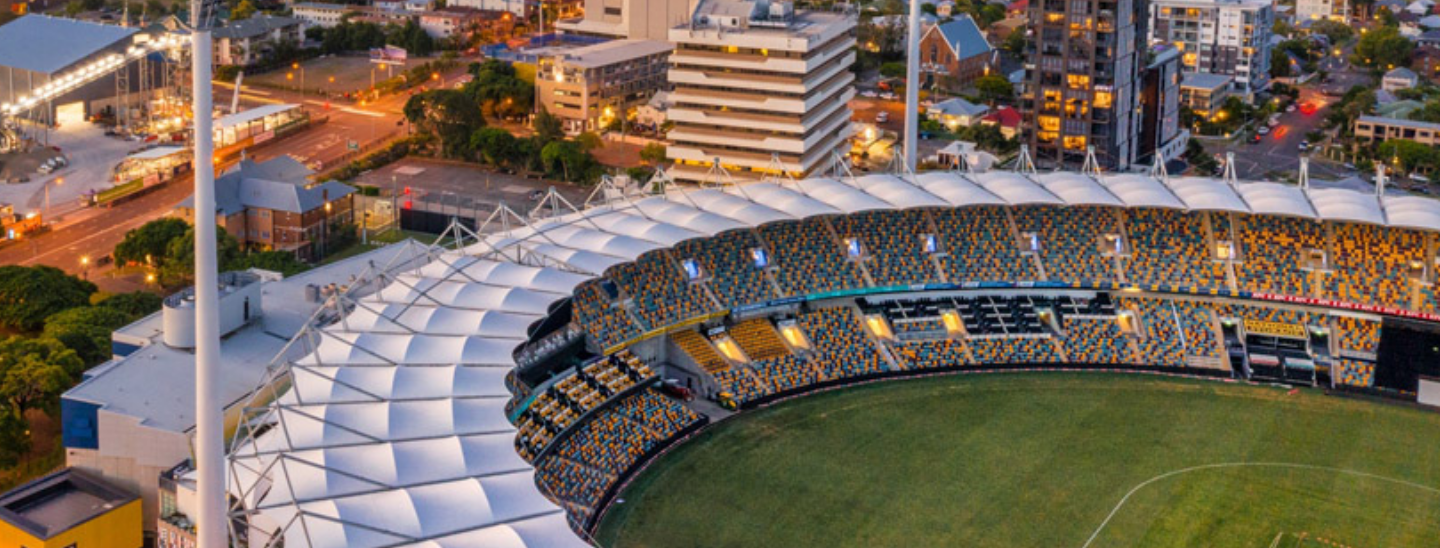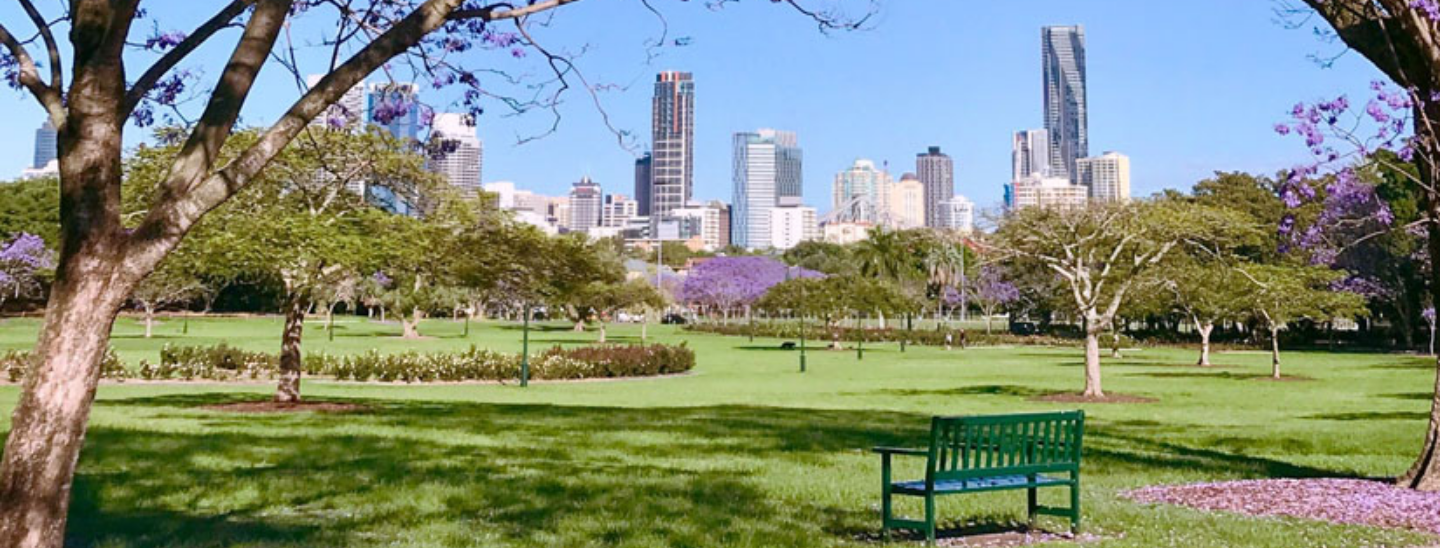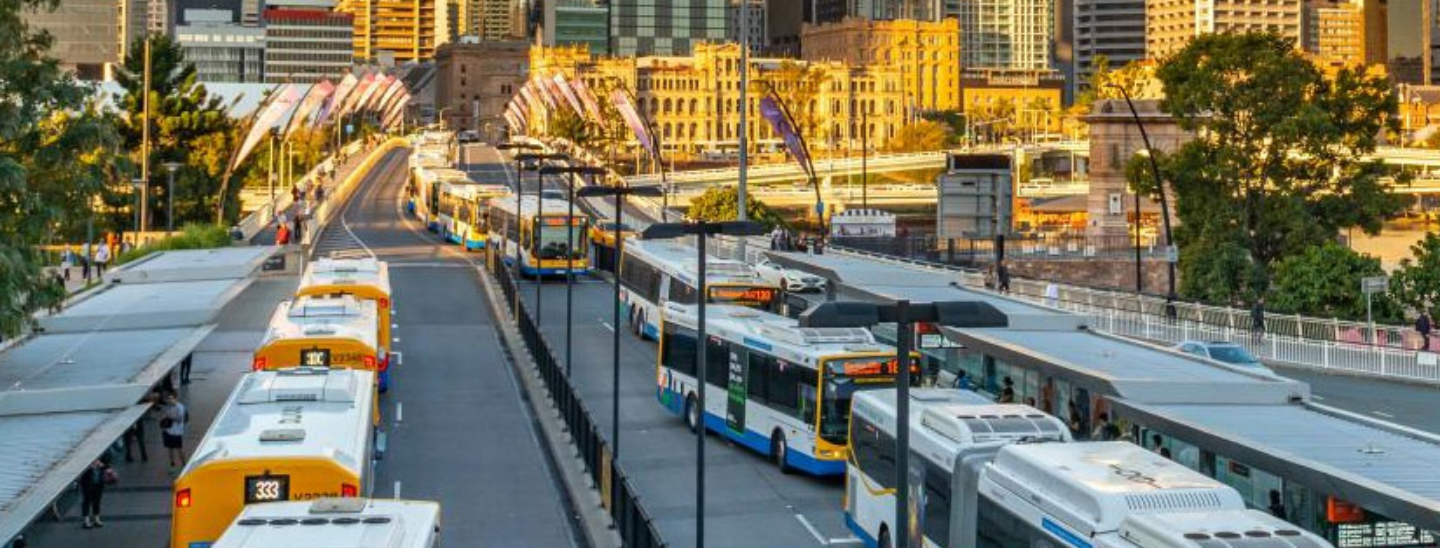Brisbane

About Brisbane
Sitting on the Brisbane River, the city is an adventurous metropolis with a relaxed vibe. Within a couple of hours drive you can explore stunning natural assets such as World Heritage rainforests, mountain peaks and a pristine bay, or immerse yourself in our ancient Aboriginal culture. A vibrant entertainment scene, a jam-packed events calendar and a welcoming attitude means Brisbane is the best place to be in Australia.
| Established | 1825 |
| Population | 2,560,700 (2020) |
| Area | 15,842 km2 (6,116.6 sq mi) |
| Timezone | AEST (UTC +10:00) |
| Climate | Humid Sub-Tropical |
| Mean Min. Temperature | 25.4°C / 78°F |
| Mean Max. Temperature | 15.7°C / 60°F |
| Annual Rainfall | 1,036mm / 40.8in |
| Traditional Owners | Turrbal & Jagera Peoples |
| Indigenous Name | Meanjin (Brisbane) |
| Local Government Area/s | Brisbane City Council |
| Region | South East Queensland |
Neighbourhoods
Brisbane covers a large area which means there are plenty of different entertainment options to suit everyone. Each neighbourhood offers something different so explore them all!
Brisbane City: From dusk until dawn, the city has got it going on. A café crawl will reveal some of the best coffee in Australia, as well as meals to make your mouth water. Shopaholics will find everything from favourite brands to new up-and-coming designers. When it comes time to refuel, there are choices for days – you can find family staples, fine international dining and some new trends to try. For those who love the nightlife, the Brisbane City bar scene offers live tunes, local brews and expertly-crafted cocktails. Anyone needing a break from the hustle need only stroll to the lush City Botanic Gardens to recharge.
Spring Hill & Roma Street Parkland: Beside the CBD lies the evergreen urban getaway of Roma Street Parkland. Its world-class gardens and immaculate green space play host to a calendar of year-round events. Continue to explore through Spring Hill for charming bars and eateries among heritage-listed landmarks.
Fortitude Valley: Also known simply as “The Valley”, Fortitude Valley has many facets. While this eclectic suburb has an interesting history these days it is both an indie shopping haven and a nightlife spot from sunrise to sunset. By day you can uncover hidden treasures and delicious eats in boutiques and laneways, and once night falls it’s time to bring the party. The Valley has a solid reputation as Brisbane’s evening entertainment capital where you can dance up a storm, see a killer live band, explore rooftop bars and sip some of the best cocktails in the country in the space of a few blocks. Great people watching by day and by night and plenty to do to occupy you around the clock.
South Bank: South Bank Parkland’s free swimming facilities are the perfect place to relax on a warm day, providing a safe environment for people of all ages to enjoy a splash and paddle. Streets Beach provides a little slice of coastal paradise, with a great view of the Brisbane River and city skyline. South Bank is also the cultural heart of the city with the Queensland Performing Arts Centre, Queensland Art Gallery and Gallery of Modern Art (GoMA), Queensland Museum & Sciencentre, and the State Library of Queensland all calling this neighbourhood home.
West End & South Brisbane: These neighbourhoods are the home of true cool with hidden cafés, fine‑dining restaurants, wine bars and foodie laneways plentiful in this part of Brisbane. Whether you want to treat yourself to a lavish feast or get down to earth in street-food style, West End and South Brisbane have all bases covered.
New Farm: If relaxing parks, eateries and culture are your thing then New Farm is the place to go. Everywhere you look reflects the tranquil vibe of this suburb, but don’t let that fool you into thinking it’s just a sleepy spot. There is plenty of live entertainment, unique eateries and bars you wouldn’t see anywhere else. The famous New Farm Park is a Brisbane gem and is the perfect spot to lay down a picnic rug or play a game of cricket. Next door is the Brisbane Powerhouse, a contemporary arts centre housed in a pre-war power station, which offers an array of comedy, live bands, theatre and dance performances.
Woolloongabba: Whether unique antiques or an action-packed sporting match is what you love, Woolloongabba has it all and more in spades. The suburb is scattered with vintage haunts and stylish boutiques where you can pick up one-of-a-kind wares, and the streets are lined with gorgeous heritage-style buildings that house gourmet eats and boutique booze.
Other honorary mentions are Caxton Street and The Barracks, where you can check out a live band, grab a bite to eat or get a drink before heading to the footy at Suncorp Stadium. Paddington has plenty of bars and cafes housed in old worker’s cottages, along with boutiques, thrift stores and art galleries to explore. James Street in the Valley is home to a number of local and international designer stores alongside bars, cafes and award winning restaurants.

Sport
Sport lovers will feel right at home in Brisbane with some top national teams that attract a passionate local following. Nothing beats being in the crowd at one of the big games at either Suncorp Stadium or the Brisbane Cricket Ground, more affectionately known as ‘The Gabba“. Whatever your passion, there’s a local team for you to throw your support behind:
Rugby League (NRL): Brisbane Broncos
Rugby Union: Queensland Reds
Aussie Rules Football (AFL): Brisbane Lions
Cricket: Queensland Bulls & Brisbane Heat
Soccer: Brisbane Roar
Basketball: Brisbane Bullets

Parks and Green Spaces
When you want to get away from the crowds, one of the best aspects of living in Brisbane is the amount of green space. There are large parklands and gardens in the inner city to explore as well as small suburban parks and playgrounds.
Close to Griffith College’s Mt Gravatt campus is Toohey Forest Park, that rewards cyclists and bushwalkers with city views and a cold drink at the look-out’s café. To the west of the city is Mt Coot-Tha which is home to the Mt Coot-Tha Botanic Gardens and a lookout on top providing views across the city.
Brisbane boasts a number of other nature reserves that offer visitors the chance to see native Australian wildlife in its natural habitat. Boondall Wetlands, Brisbane Koala Bushlands just 15kms from the city, Tinchi Tamba Wetlands Reserve and the Bayside Parklands are just some of the places you can head off to explore.
Climate
Brisbane is a sub-tropical paradise where the sun shines more than 300 days a year, which is why Brisbanites spend so much time outdoors.
Summers are hot, humid and wet with average daily temperatures ranging from 20.5°C (68.9°F) to 29.5°C (85.1°F) from November through March when the weather starts to cool down. Winters are moderately dry and warm with average daily temperatures ranging from 12.2°C (53.9°F) to 23.5°C (74.3°F) from May through to September.
From October to March, thunderstorms are common over Brisbane with the more severe events accompanied by large damaging hail stones, torrential rain and destructive winds. These also tend to be the wettest months in the city with an average rainfall of 127.7mm (5.03in) each month. During the cooler months (Apr-Sep) the average monthly rainfall drops to 45.8mm (1.80in).
Brisbane is within the southern reaches of the tropical cyclone risk zone however full-strength tropical cyclones rarely affect the city. The biggest risk is from ex-tropical cyclones, which can cause destructive winds and flooding rains.

Transport
Getting around Brisbane is easy and convenient with many transport options available. A Translink go card is the best way to access Public Transport and can be used on all Translink bus, train (including Airtrain), ferry and tram services in the greater Brisbane, Ipswich, Sunshine Coast, and Gold Coast regions.
There are also free transport options including the City Loop and Spring Hill Loop bus services that circle the city every 10 minutes, and the CityHopper ferry service that travels along the river from North Quay to Sydney Street, New Farm. Some special events will also offer Free Public Transport options for attendees.
A comprehensive bus and train network runs throughout the city, connecting the outer and inner suburbs. A detailed Trip Planner and Maps are available on the Translink website. Select Citytrain services (Beenleigh, Caboolture, Ipswich Lines) and NightLink bus services operate between Midnight and 5am on Fridays and Saturdays from Brisbane City and Fortitude Valley to get you home safely.
Taxis operate across Brisbane with Black and White Cabs and 13Cabs being the providers. Rideshare providers Uber, DiDi and Ola amongst others, all operate in Brisbane.
Electric Scooters and Bicycles are also available for hire, visit Neuron for more information or download their app.
Culture
Brisbane is a wonderfully creative place that loves the arts. The impressive Gallery of Modern Art (GoMA) and Museum of Brisbane regularly host amazing international exhibitions that celebrate creativity in all its forms, from classic designer hat collections to abstract art installations.
If Theatre, Ballet or the Symphony is more your style then you can head to the Queensland Performing Arts Centre (QPAC) where they have a year-round schedule packed with shows and performances. The Brisbane Powerhouse in New Farm, Queensland Theatre in South Brisbane, and the La Boite Theatre in Kelvin Grove are other venues entertaining throughout the year.
As well as galleries and theatres, Brisbane is home to a variety of cultural events and festivals all year-round with some of the most notable being:
- World Science Festival (Mar)
- Brisbane Street Art Festival (May)
- Brisbane Writers Festival (May)
- Brisbane Comedy Festival (May)
- Brisbane Good Food Month (Jul)
- Brisbane Marathon Festival (Aug)
- Brisbane Festival (Sep)
- BIGSOUND (Sep)
- Brisbane Fringe Festival (Oct)
- Supanova Comic Con & Gaming (Nov)
For more information on Brisbane and things to see and do, Visit Brisbane has a comprehensive website for you to explore!